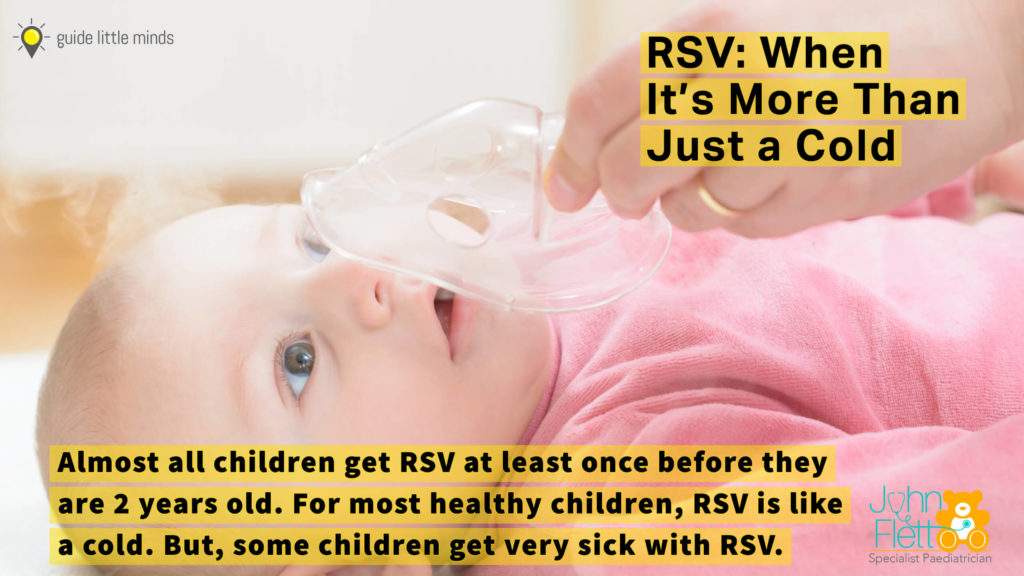“Is your baby at risk for RSV?

Almost all children contract RSV (respiratory syncytial virus) at least once before they turn two years old. For most healthy children, RSV resembles a common cold, but some may become very ill.
RSV is a virus causing respiratory illnesses, affecting the nose, throat, and lungs. Its prevalence varies across different regions. Due to COVID-19 safety measures like mask-wearing and physical distancing, RSV cases were reduced in 2020. However, when these measures were relaxed in 2021, RSV cases increased.
RSV usually leads to a cold, followed by bronchiolitis or pneumonia, with symptoms lasting around 5-7 days. Cold symptoms may include fever, cough, congestion, sneezing, runny nose, fussiness, and poor feeding. Bronchiolitis symptoms include cold symptoms plus fast breathing, flaring nostrils, head bobbing, grunting during breathing, belly breathing, tugging between ribs, and wheezing.
It’s essential to monitor your baby’s breathing and look for signs of difficulty, such as chest wall retractions, which indicate they’re working harder than usual to breathe.
Infants at greater risk for severe RSV infection include those:
- 12 weeks old or younger at the start of the RSV season
- Born prematurely or with low birth weight (especially before 29 weeks gestation)
- Having chronic lung disease or certain heart defects
- With weak immune systems due to illness or treatments
Additional risk factors include low birth weight, having siblings, maternal smoking during pregnancy, exposure to secondhand smoke, a history of allergies and eczema, not breastfeeding, and attending childcare or living in crowded conditions.
Call your pediatrician immediately if your child exhibits any symptoms of bronchiolitis or dehydration, has difficulty breathing, shows grey or blue coloration in their tongue, lips, or skin, or appears less active and alert. Some children with RSV may develop bacterial infections, so contact your doctor if symptoms worsen or don’t improve after seven days, or if your child experiences high fever, poor sleep, fussiness, chest pain, or ear issues.
Paediatricians diagnose RSV through symptom evaluation and a physical exam, sometimes using a nasal swab test, chest x-ray, or oxygen saturation test. RSV is contagious and spreads similarly to the common cold. Infected individuals are usually contagious for 3-8 days, but some infants and immunocompromised people can remain contagious for up to four weeks.
To help your child feel better, treat RSV as you would a cold: use nasal saline, a cool-mist humidifier, ensure they stay hydrated, and administer paracetamol or ibuprofen (for children older than six months) for low-grade fevers. Avoid aspirin and cold medications. Only 3% of children with RSV require hospitalization, typically for oxygen and/or IV fluids.
To protect your children from RSV, practice good hand hygiene, keep them up-to-date on immunizations, limit their exposure to crowds and sick individuals, disinfect objects and surfaces regularly, and breastfeed if possible. For high-risk infants, a monoclonal antibody treatment called Synagis may reduce the risk of severe RSV infection. Lastly, remember that most children recover well from RSV and grow into healthy adults.


